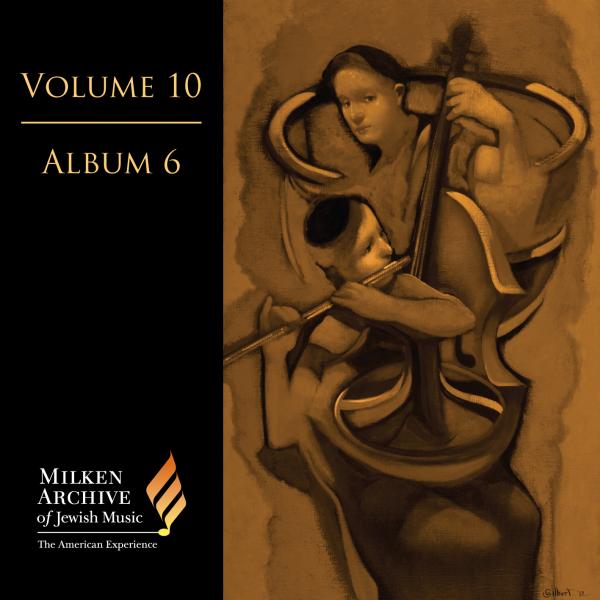Tracks
Track |
Time |
Play |
| I. Aubade | 03:19 | |
| II. Nigun | 06:53 | |
| III. Ballade | 08:19 | |
| IV. Soliloquy | 04:00 | |
| V. In Memoriam | 06:56 |
Liner Notes
Schoenfield’s String Quartet No. 2, titled Memoirs, was completed in 2003. Its five movements are Aubade, Nign, Ballade, Soliloquy, and In Memoriam. Though the title of the piece suggests a program, none is provided. To the extent that it may be considered programmatic music, that program is either subliminal or a type of emotional journey rather than an unfolding of extramusical events.
The first movement comprises an incompletely worked out fugal statement, which is revisited in the final movement and only there developed into a full fugue. In this brief Aubade, however, the cello introduces the fugal subject—a doleful line, powerful in its plaintiveness and exquisite in its simplicity. But the other instruments take it up only fleetingly, so that the entire movement serves as a foretaste of the final one.
The title of the second movement, Nign, refers not only to a quotation of a genuine Hassidic tune at its close, but to the music’s overall Hassidic spiritual and mystical aura. The four-measure melody on which it is built, however, which unfolds throughout the movement in various alterations, extensions, and fragmentations, is well known among traditional synagogues in America; its possible European roots are not known, but it is probably not of Hassidic pedigree. This tune, the first part of which appears at the outset and is then stated more fully by the first violin at measure 18, is one of several frequently utilized musical versions for the congregationally sung refrain on Yom Kippur—v’al kulam elohai s’liḥot, s’laḥ lanu m’ḥal lanu kaper lanu (For all these [sins], O God of forgiveness, forgive us, pardon us, grant us atonement). This refrain punctuates the communally recited catalogue of collective transgressions (al ḥet sheḥatnu l’fanekha . . . . / For the sin which we have committed before You by/of . . . . ). While its identity is always transparent, Schoenfield presents the tune with slight variations, even in its initial statement, including cantorially inflected ornamentations that would not be observed in practice as a congregational melody.
The melody quoted (but not developed or repeated) in the last three measures of this second movement—which forms a type of miniature coda—belongs to the repertoire of the Lubavitcher Hassidim, the dynasty also now known as Habad. It too is a reference to a Yom Kippur prayer, the strophic recitation ki anu amekha v’ata eloheninu (For we are Your people and You are our God). From 1955 to 1963 it was the custom of the last Lubavitcher Rebbe (the rabbinical and spiritual leader of the group), Rabbi Menahem Mendel Schneerson (1902–1994), to introduce and teach “new” niggunim to his Hassidim, or followers, as they assembled each year in Brooklyn on the holy day of Simhat Torah. This is one of those melodies taught in 1956, which, although their precise origin is not clear, are nonetheless considered “the Rebbe’s niggunim.” Only the first phrase of the ki anu amekha is quoted in this string quartet.
The Ballade movement (no. 3) is infused with intense fury—even a bit of controlled chaos at times—punctuated only briefly by more contemplative passages. The pervasive motive, introduced in the third measure and treated sequentially, may be an original invention of the composer in terms of pitch content, but—as with so much of his music—it seems intentionally constructed to appear drawn from collective Hassidic tradition. And the overall frenzy recalls spiritually intoxicated Hassidim either singing as they dance or dancing as they sing—in either case (or both) absorbed with joyous ecstasy.
Soliloquy, the fourth movement, despite its label, is no soliloquy for any one voice, but rather a piece in which all four instruments participate equally with judicious use of imitative counterpoint. Its most arresting feature is a deliberately simple folklike phrase, introduced nearly midway through the movement by the second violin (anticipated by the viola), with the first violin taking up the second half of the tune. Appropriately, the composer has furnished the instruction “simplice, like a folksong.” Its distinct relationship to the fugal subject of both the opening and final movements, by virtue of the similar (though not identical) incipits, contributes to the unity and tight construction of the entire work.
Credits
Composer: Paul SchoenfieldPerformers: Jonathan Bagg, Viola; Ciompi String Quartet; Hsaio-Mei Ku, Violin; Eric Pritchard, Violin; Fred Raimi, Cello
Additional Credits:Publisher: Migdal Publishing
